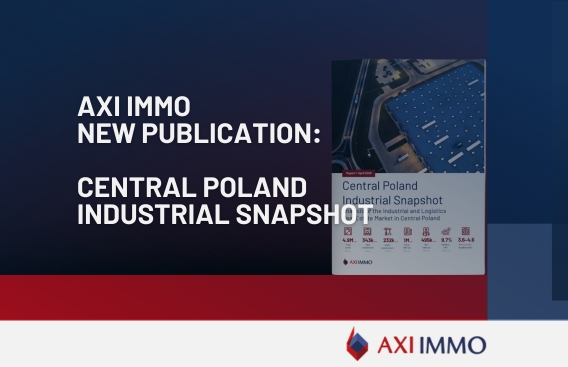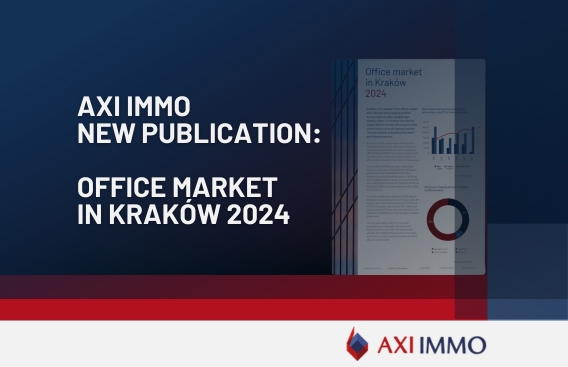Raport: Changes and prospects for the warehouse and logistics market in Poland
What has changed in the warehouse & logistics sector in 2020? What are the short- to medium-term prospects for growth in the Polish warehouse market?

In a nutshell, what has changed in the warehouse & logistics sector in 2020?
The pandemic has revealed the strength of the sector and demonstrated how solid its fundamentals are. It also accelerated the trends that had already been driving demand for warehouse space, mainly online shopping.
On the demand side, we have seen a K-shaped growth trajectory. This means that different groups of occupiers have diverged from each other. We have those that have been growing: e-commerce, couriers, the FMCG sectors, pharmaceutical companies and DIY retailers. And then there are those that have been shrinking: companies with links to the HoReCa sector (Hotels, Restaurants, Cafes) and those servicing traditional retailers.
Due to this polarization, investors and developers now assess the quality and credit worthiness of the tenant more carefully. They also scrutinize the prospects of the wider sector an occupier represents. It is better to allow a certain level of vacancy in a building and wait for a quality tenant, and better lease terms, then to lease up the space quickly.
A degree of ‘wait and see’ also makes sense because the supply dynamics are changing. The first half of 2020 in Poland marked a bit of a development boom, with a high share of speculative projects. Developers have limited activity, mainly because they are constrained by a more conservative approach to lending by banks. Currently, there is significantly less space under construction and space delivered in recent months is being absorbed quickly. We have seen no shifts in rents in recent quarters but this may change going forward and developers are certainly hoping that being selective will pay off as higher rents will be achieved later on.
The type of product developers offer has also changed. More last mile schemes are being offered by developers as they respond to the acceleration in e-commerce. Moreover, e-commerce occupiers seek to improve their competitive edge by shortening delivery times and offering convenient returns. To help achieve this, clients have been investing more into automation solutions. The added benefit of automation is the improved health and safety of warehouse workers and this increasingly helps justify the high cost of such an investment.
Another trend we have recently observed is a rise in green solutions. This is driven by the market – both occupiers and investors require their buildings to be more sustainable.
Warehouses have also been a bright spot on the investment market as they proved their immunity to the Covid pandemic. Investors continue to be drawn to the sector’s income stability and shift their allocations away from retail to warehouses. The transaction volume in the sector in Poland reached EUR 1.9bn so far in 2020. This is a record annual total, despite the fact that we have one more quarter to go!
What are the short- to medium-term prospects for growth in the Polish warehouse market?
We are during second wave of the pandemic. The main important and immediate consequence for the warehouse sector is another spike in e-commerce. The share of e-commerce in total retail sales in Poland increased again in October, to 7.3%. This is still a very low level compared to Western Europe, which means the potential for further growth is high. For example in the UK, e-commerce accounts for 28% of all purchases.
These statistics are not fully comparable as they are calculated based on different methodologies [E.g. Polish data doesn’t include click and collect purchases]. But they definitely demonstrate that there a gulf between us and the most developed e-commerce markets. And we expect robust growth as we try to catch up.
As a consequence, we will see high occupier activity in this segment of real estate. And it will be more than 1:1. E-commerce after all requires 3 times more warehouse space than traditional retail.
In addition to e-commerce, stockpiling in anticipation of any potential supply chain disruptions is also driving demand, and will continue to do so. The pandemic shifted the emphasis to ‘just in case’ rather than ‘just in time’. Food retailers, DIY chains and pharmaceutical firms are likely to see the largest spikes in demand in the coming months.
So in summary, we expect quite high occupier activity in the coming months. But it won’t translate into rental growth right away. That’s because availability remains relatively high. The vacancy rate in fact increased in Q3, to 8%, as a number of speculative projects that started before the pandemic were delivered to the market. But we do think that new space will be absorbed relatively quickly. In addition, financing conditions for developers have tightened and developers are not able to maintain the same level of new supply. They are constrained by banks, who will not lend unless a scheme is 50% pre-let. We have already seen a significant drop in speculative development. It is currently 26% of all space under construction – down from almost 50% at the end of 2019!
We expect availability to fall steadily in the coming quarters and this should eventually put upward pressure on rents in the medium term horizon. Rents are currently very competitive compared to other European countries and have been broadly stable. As soon as the demand/supply balance shifts towards more of a landlords’ market, rental growth should return. Prime headline rents are currently even 40% lower compared to Germany, for example.
In the medium to longer term, reorganization of global supply chains will also have an impact on the Polish market. Supply chains will shorten, with a number of firms moving at least part of its production facilities from Asia into Europe. Given Poland’s highly competitive market conditions – low labour and land costs in particular – it is likely to attract a bulk of this activity.
Additionally, new production investments might be connected with electromobility solutions. More and more automotive, electronic and tech companies want to develop this part of the business. Trend is quite strong. Poland construction costs, location in Europe and first successful investments like LG Chem or GM are a good start with a potencial to a futher growth.
Where clients buying land for warehouses? Where are the new hotspots now and in the future?
We are seeing particularly high demand for urban plots that are suitable for last mile e-commerce operations. They are therefore difficult to obtain and often require brownfield redevelopment.
The planning process for a last mile project can be also more challenging and more time consuming compared to big boxes. But it also offers higher rewards. This segment of logistics real estate has the highest potential for rental growth going forward.
E-commerce also requires a regional, national and international distribution hubs. This will continue to support demand for land in the major logistics hubs in the country. Markets such as Stryków (Central Poland), Janki and Pruszków (Warsaw) or Sosnowiec/Czeladź (Upper Silesia) offer high quality warehouse and transport infrastructure and economies of scale as they can service a high number of consumer markets. They also help achieve high levels of efficiency as they ensure proximity to subcontractors and sorting plants.
We also believe that medium-sized towns with a population of 20,000-50,000 that are strategically located near key motorways have a high potential as large fulfillment hubs. They offer good connectivity as well as access to labour. An example of a town that has attracted a large e-commerce occupier recently is Świebodzin in Western Poland, Bolesławiec in Lower Silesia or Kunto in Central Poland.
We have still a competitive advantage, because in comparison to Western Europe and also parts of the CEE region, for example Czechia, the administrative procedures are more faster and easier to obtain and the planning process takes considerably less time and number of greenfield properties are relatively high.
Get to know the market data from the Polish warehouse market – read the Report – Polish Warehouse Market in Q3 2020.
Recent articles
14 April 2025
New Work expands in Warsaw with new serviced offices space at Metron building, AXI IMMO advises
Serviced offices at New Work in Warsaw, just steps away from Metro Wierzbno station.
9 April 2025
Central Poland Industrial Snapshot – Analysis of the industrial and logistics real estate market in Central Poland, AXI IMMO publication
High industrial take-up in Łódź region in 2024 driven by lease renewals
3 April 2025
AXI IMMO presents its analysis of the industrial & logistics market in Małopolska, southern Poland
Małopolska on developers' spotlight: more space for industrial and logistics on the horizon.
24 March 2025
Office market in Kraków 2024, Poland, publication by AXI IMMO, 2025 March – Analysis, trends, forecasts
Kraków is the leader of regional office markets – tenant activity is growing. AXI IMMO's special publication on Office market in Krakow in 2024, Poland includes an analysis of supply, demand, rental rates, as well as trends and forecasts on the Krakow office market in 2025 and 2026.



